Parents are the strongest advocates for their children suffering with rare diseases, pushing researchers, companies and regulatory authorities to do more to save their loved ones.
For the 350 million people worldwide battling with a rare disease, the impact on their day-to-day lives is profound. This statistic is exponentially more poignant because half of these rare disease patients are children, 30% of whom won’t live past their fifth birthday. The wait for a treatment is painfully slow. While huge progress has been made thanks to the Orphan Drug Act of 1983, 95% of rare diseases still lack an approved FDA treatment.
“As of last year, there were only 438 medicines available to treat rare diseases," says Mallory Factor, CEO of IntraBio. “A lot of people are dying from these horrific diseases."
The Collective Search for a Treatment
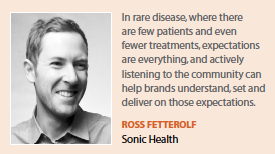 Small biotech companies have been at the forefront of orphan drug development, although a growing number of larger pharma companies and their partners are starting to invest heavily in orphan diseases. One such company is IQVIA Pediatric and Rare Disease Centers of Excellence, which is focused on accelerating the pace of drug development to get therapies to patients. “By using strategies such as disease data hubs, statistical modeling/simulation, and external comparator arms, we are working to reduce sample sizes and to conduct trials without the need for placebo groups, aiming for shorter studies and more rapid drug approvals," says Jeffrey Keefer, M.D., Ph.D., head of IQVIA. The company also works with patients, families, and advocacy groups to inform protocol design, making trials as clinically relevant and family friendly as possible.
Small biotech companies have been at the forefront of orphan drug development, although a growing number of larger pharma companies and their partners are starting to invest heavily in orphan diseases. One such company is IQVIA Pediatric and Rare Disease Centers of Excellence, which is focused on accelerating the pace of drug development to get therapies to patients. “By using strategies such as disease data hubs, statistical modeling/simulation, and external comparator arms, we are working to reduce sample sizes and to conduct trials without the need for placebo groups, aiming for shorter studies and more rapid drug approvals," says Jeffrey Keefer, M.D., Ph.D., head of IQVIA. The company also works with patients, families, and advocacy groups to inform protocol design, making trials as clinically relevant and family friendly as possible.
In July 2017, Emmaus Life Sciences received FDA approval for Endari to treat patients with sickle cell disease, the first treatment for the disease in nearly 20 years. The company works with advocacy groups, healthcare practitioners, young patients, and their families to spread awareness of the condition and Endari, says Yutaka Niihara, M.D., CEO of Emmaus.
IntraBio is about to start trials for diseases that currently have no authorized treatment, such as Tay-Sachs, which is caused by the absence of an enzyme called hexosaminidase-A and for Niemann-Pick Type C, which is one of a group of rare inherited disorders of fat metabolism.
“We’ll have up to 39 patients in the trials for Niemann-Pick C, up to 39 for GM2, principally Tay-Sachs, and we’re also waiting to hear about cerebellar ataxia sub-type, which is called ataxia-telangiectasia or Louis-Bar syndrome and we’ll have another 30 patients in that trial," Mr. Factor says. “We’ll have three trials going on simultaneously with very similar trial protocols and endpoints."
The company worked with patients, caregivers, patient advocacy groups, and top neurologists to develop the trial protocols. On the advice of advocacy groups, the company decided on doing a double-blind placebo crossover. “The lifespan for patients with these diseases is sadly very short," Mr. Factor says. For example, children with Tay-Sachs rarely live beyond the age of 4.
“Biopharma companies are in a position to build the tools and information that can help inform families battling with a rare disease," says Ryan Mason, chief creative officer at closerlook and parent of a child with Kawasaki disease, a rare autoimmune inflammatory condition that affects 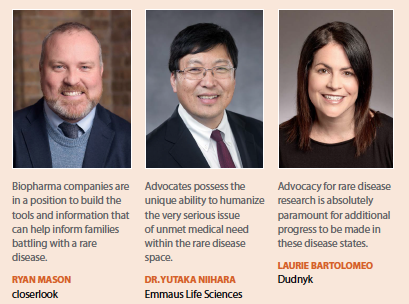 the blood vessels of young children. “Technology can help parents discover each other. Programs can be built to match families who are just beginning the journey with a disease together with those families who have already traveled that path."
the blood vessels of young children. “Technology can help parents discover each other. Programs can be built to match families who are just beginning the journey with a disease together with those families who have already traveled that path."
The Role of Advocacy
Advocacy for rare disease research is paramount to ensure additional progress is made in these disease states, says Laurie Bartolomeo, executive VP, creative director, Dudnyk. Large advocacy organizations such as Global Genes and NORD are making great strides in legislation and policy that will support families affected by rare disease, as well as smaller, disease-specific advocacy groups that rally communities, raise funds, and appeal to scientists and physicians focused on meaningful discoveries.
“Many of the rare disease advocacy groups that exist today were started or inspired by parents looking to draw attention and resources to their children’s conditions, and their passion and hard work is at the heart of the incredible progress we are now seeing in this space," Ms. Bartolomeo says.
John Crowley, now CEO of Amicus Therapeutics, is perhaps the best-known advocate dad, having established Novazyme Pharmaceuticals with the specific aim of finding a treatment for Pompe disease after two of his children were diagnosed with the condition.
Life-sciences entrepreneur Brad Margus started a nonprofit, the A-T Children’s Project, that 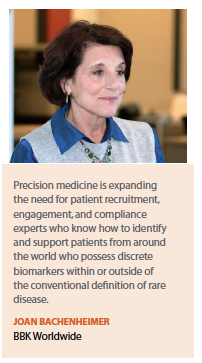 orchestrates research on ataxia telangiectasia or “A-T," the disease that afflicts two of his sons. He also founded a CNS company that focuses on brain diseases, bringing him closer to the issues his sons face. Today, he leads Cerevance, which is specifically focused on human brain tissue and brain diseases.
orchestrates research on ataxia telangiectasia or “A-T," the disease that afflicts two of his sons. He also founded a CNS company that focuses on brain diseases, bringing him closer to the issues his sons face. Today, he leads Cerevance, which is specifically focused on human brain tissue and brain diseases.
Ms. Bartolomeo’s passion for the rare disease field has deepened through her personal experience as a parent of a child with a rare disease. Like many other parents of a child with a rare disease, her family waited a long time — six years — for an accurate diagnosis.
“We have been through numerous surgeries, hospitalizations, and a myriad of medical interventions, pharmaceuticals, and devices," she says. “We’ve learned how to traverse the insurance landscape and advocate and appeal for everything our son needs. Most of all, we’ve learned how to cope with the unpredictable and how to stay positive in the face of the unthinkable."
Dr. Niihara says advocacy groups are integral to furthering rare disease R&D and sharing the experiences of those who suffer with these conditions. “As we have seen with sickle cell disease, there is a lack of awareness and understanding of most rare diseases and treatment options among the general public, medical community, and even patient populations," he says.
“Advocates possess the unique ability to humanize the very serious issue of unmet medical need within the rare disease space. By providing a personal connection to a rare disease, advocates instill a sense of urgency and desire among those less aware to help provide a treatment option to rare disease patients."
Early detection of genetic disorders is key for the survival of rare disease patients, even more so when dealing with children. “For example, in lysosomal storage diseases such as Fabry, a young patient can suddenly suffer from stroke or develop terminal kidney injury without early detection," says Nagore Fernandez, head of patient solutions, Ashfield Europe and Canada (EUCAN). “Genetic testing is available, but awareness among physicians in contact with these patients is key. This is why one of the key things we do is to work with advocacy groups and raise awareness among the HCP community via targeted campaigns in their practice or through social media."
Parents’ Search for Answers
In diseases that impact children, parents will never stop seeking solutions, says Ross Fetterolf, co-founder of Sonic Health. The support services offered by a company can, therefore, be just as important as the medications themselves. “Parents in these communities aren’t shy about sharing their experiences with a company/product via social media in an effort to inform other families who are facing similar challenges, so it’s critical that brands tune in to their customers," he says.
“We’ve observed communities of parents trading hourly intel on everything from prescription coverage to product delivery status. Pharma companies must carefully map out their customer experience journey, measuring continuously, and optimizing regularly to ensure hurdles are addressed and communication is proactive. Families living with rare diseases have had to wait for what feels like forever to find a therapy that can help, so to leave them in the dark about coverage status or when they will receive medication is simply not acceptable. Brands should focus their efforts on designing programs and resources that help ensure people have the info they need, when they need it. Active listening is no longer a luxury, it’s a mandate."
Rick Karl, president of the Cure Tay-Sachs Foundation (CTSF), understands deeply the pain of a rare disease. When his daughter, Krystie, was 8 months old, he and his partner realized she wasn’t keeping up with developmental milestones.
“Just before her first birthday, Krystie’s MRI revealed abnormalities in her brain indicating that she could have some sort of metabolic disorder," Mr. Karl says. “We then took Krystie to an ophthalmologist who found cherry-red spots behind her eyes, which we later found out was a classic symptom of infantile Tay-Sachs disease. We had a blood test that week to confirm the diagnosis. We had just been told that our beautiful daughter that we tried so hard to bring into this world only had a few short years to live. Most children with Tay-Sachs don’t live past the age of 5."
After much research, Mr. Karl and his partner found that there was only one potentially experimental and extremely risky treatment involving a stem cell transplant. They decided to move forward with the transplant through the University of Minnesota Medical Center in Minneapolis.
“The treatment involved 11 days of chemotherapy followed by one day of total body radiation to 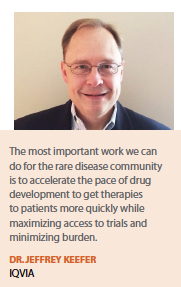 wipe out her immune system and then she received donated stem cells from umbilical cord blood in the hopes that her body would start producing the missing enzyme," Mr. Karl says.
wipe out her immune system and then she received donated stem cells from umbilical cord blood in the hopes that her body would start producing the missing enzyme," Mr. Karl says.
“The transplant itself only took about one hour. However, the recovery period was brutal, with Krystie in the hospital for 89 days. The transplant was successful and Krystie’s body began making the missing enzyme, Hex A. However, after Krystie’s initial medical treatment, we never did get to leave Minneapolis and it became our new home since she continued to require ongoing medical treatments throughout the rest of her life."
The couple lost their daughter when she was just 9. However, the treatment did extend her life and enhance her quality of life.
“Today, I run the CTSF, which is a grassroots organization started by parents to fund research and drug development for this horrible disease," he says. “We keep raising money to fund geneticists and others who are actively pursuing new options for the treatment of these lysosomal storage disorders."
Mr. Karl says those who advocate get the best medical care. “We became Kristie’s strongest advocates," he says. “You can choose two paths with this type of disease. You can have a hands-off attitude and your child will die early in life or you can get heavily involved. You can quit your job. You can do whatever it takes to keep your child healthy."
Having friends with a daughter suffering from the same condition as his son provided Mr. Mason and his wife with priceless advice. “We also live near Lurie Children’s Hospital, one of the leading Kawasaki treatment and research centers in the country," he says. “Our son received the treatment he needed in time to head off serious complications and today he has a clean bill of health."
Mr. Margus’ sons are both in their 20s, well past the median age for people with A-T, which is 16½. While the company he leads isn’t working directly in A-T, it’s learning more about the cerebellum, which is the part of the brain that dies in A-T.
“Parents who have children with rare diseases develop greater expertise in that disease than physicians," he says. “That’s not a put-down to physicians, but they are unlikely to have seen many kids with a disease like A-T, so they don’t know what is typical or unusual with the disease."
The way Mr. Margus tackled the issue of lack of knowledge was to work with experts to establish a multidisciplinary clinical center at Johns Hopkins that has now seen hundreds of kids and repeatedly over the years to develop a natural history and understanding of the disease. “As with so many rare diseases, the big battle is that every time a caregiver or a parent has to go somewhere new, they have to reeducate everybody," he says.
Joan Bachenheimer, founding principal at BBK Worldwide, understands the need to be an advocate for your own child. “When my firstborn child was 6 months old, he was very ill and had to be rushed to Children’s Hospital in Boston," she says. “My husband and I found a voice we never knew we had. When you endure an experience like this, your commitment becomes so strong that you are empowered to not only protect those closest to you, but also to advocate for others you don’t know."
Building Partners
Many companies work with advocacy groups. For example, IQVIA provides sponsorships of rare disease events, fundraising for rare disease organizations and through associations with patient advocacy groups worldwide. “Across the organization, individuals at IQVIA are donating their time, energy and money to rare disease causes, including muscular dystrophy and sickle cell anemia just to name a few," Dr. Keefer says.
Dudnyk has partnered with several biopharma companies, including Alnylam Pharmaceuticals, to raise awareness about rare diseases and bring products to market. The agency helped to bring Onpattro to the rare hereditary ATTR amyloidosis community. “We are inspired by Alnylam’s commitment to the hATTR amyloidosis community, and we work to not only help find these patients, but also deliver meaningful, useful information and support to them and their families," Ms. Bartolomeo says.
Dudnyk has worked for many years with families affected by rare diseases and the advocacy groups that support them. “Our goal is to listen and to understand the greatest challenges these families face so that we create meaningful tools that will make a real difference in their lives," she says.
Families also need information and access to clinical trials. BBK Worldwide’s Ready. Set. Go. Arrive service has enrolled and retained patients in need, but the company recognizes the complexity of the rare disease arena.
The priority for BBK is to help parents overcome challenges involved with travel, logistics, etc., while respecting cultural and religious norms, Ms. Bachenheimer says.
“From the first study we enrolled for Pompe disease to our current efforts to support educational programs developed by a mother who lost her child to a rare cancer, BBK has developed a host of services with parental advocacy at the core," she says.
Ashfield also takes great pride in being able to offer personalized support to patients with rare diseases and their families.
“This can come in many different forms, including informative campaigns for patients or their carers and support for the administration of the often complex therapies that may have been prescribed by specialist centers," Ms. Fernandez says. “We always endeavor to talk to patients to understand their experiences and challenges, continuing to get their feedback along their journey. We understand that their needs will change as they transition from early childhood, through to adolescence and adulthood."
In a disease like Tay-Sachs where time equals brain — in other words each day a little more brain is lost — Mr. Karl says it’s vital that pharmaceutical companies working in this area keep parents updated.
“For ultra-rare diseases where there really are no approved treatments in the United States or abroad, I’d like the regulators to know that they need to fight for our kids," he says. “Perhaps potential medications aren’t as fully vetted as the FDA might like, but because they’re ultra-rare 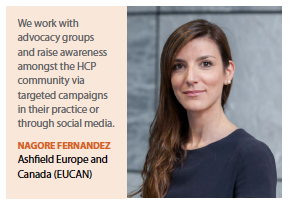 diseases, there’s really no harm in treating children for whom lack of treatment means certain death."
diseases, there’s really no harm in treating children for whom lack of treatment means certain death."
One key consideration in the search for treatments is ensuring the right risk-benefit balance.
No drugs are risk-free, Mr. Factor says; rather it’s about minimizing risk. That’s especially important when it comes to diseases where patients have a short life expectancy.
“The regulators don’t necessarily understand that by not moving drugs forward quickly, they’re forcing people to use them unlicensed because people are so desperate," he says. “We need to minimize the risk of people using unlicensed products and we have to look at the risk versus benefit for patients."
Experts says much still needs to be done to advance advocacy for rare diseases. Ms. Bartolomeo believes there is a need for universal access to genetic testing, including whole genome sequencing for children with serious illnesses of unknown origin; universal approval of medical marijuana-derived products, especially in rare catastrophic epilepsies and other rare conditions; ongoing research and development of therapies to correct genetic diseases, as well as broad access to these therapies once approved.
“Working together, our industry can support the development of this emerging class of medicines and help ensure these revolutionary therapeutics find their way to the families who need and deserve them," she says.
Companies also need to work with the kids suffering from rare diseases to find out what matters to them.
“My kids have slurred speech, they often choke on food, and difficulty with eye tracking makes it hard for them to read," Mr. Margus says. “We’ve asked them if you could fix one thing what would it be, and across the board all kids with my sons’ disease say they just want to be able to stand."(PV)
~~~~~~~~~~~~~~~~~~~~~~~~~
Challenges of the Rare Caregiver
A survey by Global Genes, in collaboration with The National Alliance for Caregiving, found the profile of a “rare caregiver"shows a strong family connection between caregiver and recipient: 62% are providing care to a child under 18 with the average age being 20.9 years old; 89% live in the same household as their care recipient; and, 70% of the care recipients’condition or disease is genetic.
Rare caregivers say more time is spent on managing symptoms than the actual disease: 82% report that treatments or therapies are used for symptom management. Getting access to treatments can be a challenge: 34% report difficulty in accessing treatments for symptom management, and 31% report difficulty in accessing treatment for the underlying disease. One in four reports their care recipient has participated in a clinical trial.
“This study shows that rare caregiving fundamentally alters the daily life of friends and family for many years,"says C. Grace Whiting, president and CEO of the National Alliance for Caregiving. “Most rare caregivers are providing time-intensive care — 8.9 years on average, and it is a demanding commitment."
On average, rare caregivers of adults spend about 37 hours a week providing care — 12 more hours a week than general caregivers. Even more time is spent in caring for a child: 53 hours a week on average, compared with 30 hours for general child caregivers.
Rare caregivers report a range of stresses and strains: 74% struggle with a sense of loss for what their care recipient’s life could have been; 67% say providing care to their recipient is emotionally stressful (twice as high as that for general caregivers); 59% exhausted personal savings; 53% report feeling alone; 51% report they have difficulty maintaining friendships; 37% report high physical strain; and 9% have filed for bankruptcy.
The study revealed a ripple effect on rare caregiving families: 24% say at least one youth under age 18 helps; 1 in 10 rare caregivers are students who often struggle to fulfill their school responsibilities; 59% report receiving help from at least one other unpaid caregiver; and only 35% have a contingency plan in place in case they are unable to provide care.











